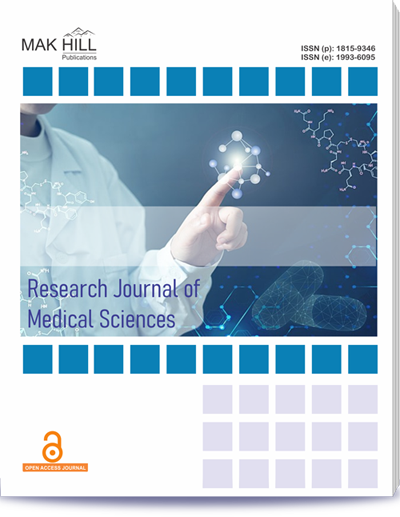
Research Journal of Medical Sciences
ISSN: Online 1993-6095ISSN: Print 1815-9346
129
Views
13
Downloads
Study of PRISM Score as Predictor of Mortality in Pediatric Intensive Care Unit (PICU) in a Tertiary Care Hospital, Tirupati
V.S. Anjan Kumar, V. Spandana, K. Sivaramudu, B. Padmini Priya and V. Mangya Naik
Page: 492-499 | Received 25 Oct 2023, Published online: 17 Dec 2023
Full Text Reference XML File PDF File
Abstract
In Developing countries like India, >¾th of critically ill children are treated in moderately equipped and resources limited pediatric intensive care (PICUs) in the public sector. PRISM III (Pediatric Risk of Mortality III) is the scoring system used to categorize pediatric patients who are at risk of mortality. The severity of illness may be predicted by the degree of alteration in the PRISM score. The goal of this study was to apply, evaluate, and validate the PRISM III scoring system in predicting mortality outcomes in the PICU of Svrrggh Tirupati, India. This Prospective observational study was conducted on 100 children between 1 month to 12 years of age over a period of one year admitted to the Pediatric Intensive Care Unit, Tertiary care hospital after obtaining approval from the Institution Ethics Committee. All the details of study cases and 19 parameters of the PRISM III scoring system of cases were collected and analyzed. The PRISM III score evaluation and mortality details were analyzed. A total of 100 children were observed, among which the majority were males (61%) and 45% of the cases were in the age group of 6‐12 years. Neurological disorder (24%) was the most common indication for PICU admission and mortality was high (80%) in cases with metabolic disorders. In the present study the mean prism score was 9.45 with a median of 5.5 and a standard deviation of 10.02. Mortality was high (40.9%) in cases with a PRISM Score between 30‐39 and the outcome was death in 30%.87.5% and 100% of the cases with PRISM scores of 10‐19, 20‐29 and 30‐39 respectively, and the difference was found to be statistically significant. Mortality increased with an increase in PRISM III score in all the age groups and also in both males and females and the differences were found to be statistically significant. In the present study, a significant statistical difference was seen with the outcome of death in cases with the presence/absence of shock, need for ventilation and GCS score <8 >8 with an odds ratio of 1.15, 8.16 and 21.71 respectively. In the present study the area under the curve was 0.986 and the 95% confidence interval was 0.968 to 1.000. The best cut‐off was at 11.5 with a sensitivity of 95.5% and specificity of 91%. The prism score would be considered to be “good” at predicting mortality. The PRISM III score is used to determine the severity of an illness objectively and can be performed effectively as a tool for predicting death in Indian PICU. In order to build and validate a mortality prediction score for our country, larger research is required.
How to cite this article:
V.S. Anjan Kumar, V. Spandana, K. Sivaramudu, B. Padmini Priya and V. Mangya Naik. Study of PRISM Score as Predictor of Mortality in Pediatric Intensive Care Unit (PICU) in a Tertiary
Care Hospital, Tirupati.
DOI: https://doi.org/10.36478/10.59218/makrjms.2023.12.492.499
URL: https://www.makhillpublications.co/view-article/1815-9346/10.59218/makrjms.2023.12.492.499